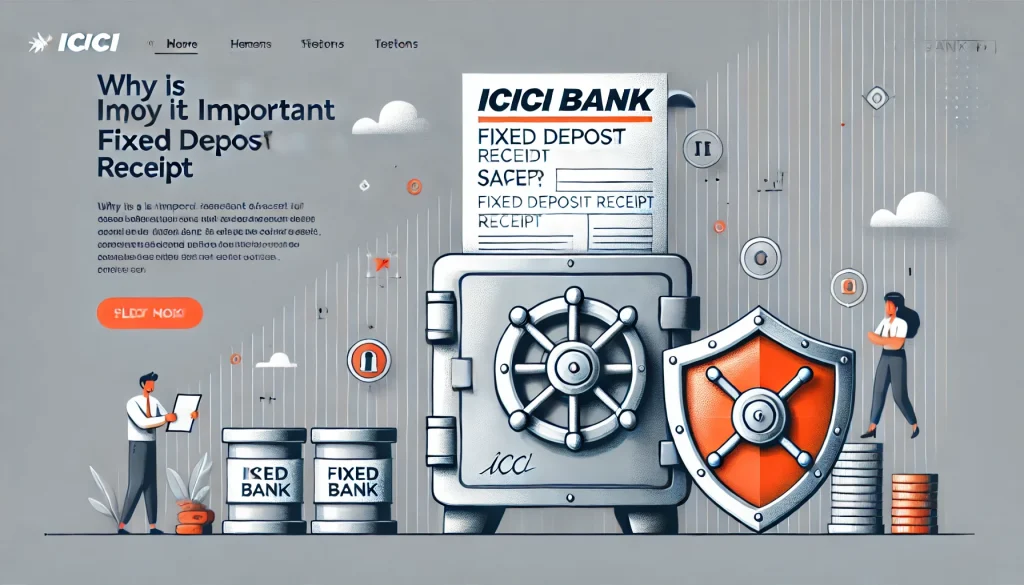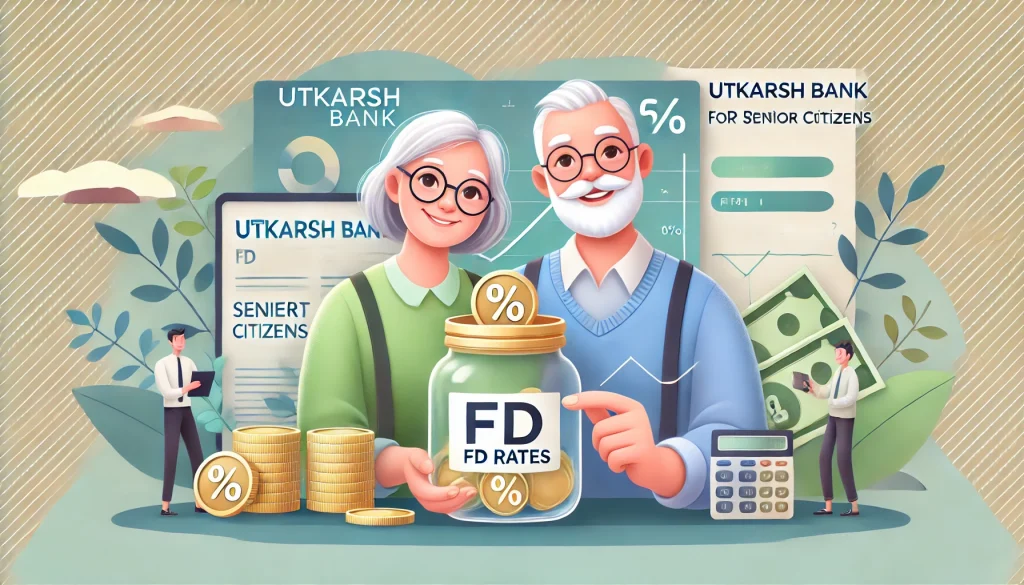
Financial emergencies can occur at any moment. In such a situation, you need to have easy access to funds. However, getting a loan from banks can be difficult in such times if you have no or low credit score. Hence, one tool that can be effective during your emergencies is taking a loan against FD.
Let’s discuss the different aspects of a loan against a fixed deposit.
What is a Loan Against FD?
Loan against fixed deposit refers to a type of loan where you use your fixed deposit with banks or financial institutions as collateral to get a loan. In this scenario, your FD acts as a security to get a loan application approved. In case of any need or emergencies, you can use your bank’s overdraft facility to take loans.
You can avail of this facility for the entire amount or for a minimal amount, as per your requirements. You can return the loan in equal monthly payments. Interest rates, as well as the repayment terms, may vary among different banks and financial institutions. Hence, it is mandatory to read the conditions properly before applying.
You need to understand that when you take out a loan on FD, you pay a higher interest rate than what is applied to your FD account. For example, suppose the interest rate applicable to your fixed deposit account is 7.5%. Therefore, the interest rate applicable on the loan can be around 9-10%.
In most scenarios, opting for a loan against your fixed deposit account is more economical than prematurely withdrawing your savings. With premature withdrawals, you lose your interest rate and pay a penalty charge to banks, which can sometimes be hefty. An overdraft facility on your FD will help you keep your savings for your desired tenure without losing any interest.
Features and Benefits of a Loan Against Fixed Deposit
Before you apply for a loan on a fixed deposit, it is important to have a clear picture of its features and benefits.
- You can get access to liquid funds using this process. Banks and NBFCs allow you to avail up to 90% of your FDs as a loan, helping you get easy access to liquid funds during a crisis.
- Instead of prematurely withdrawing your FD, you can always choose to take a loan against it. It will help you get funds during an emergency without losing the savings till maturity.
- Loans against FD interest rates are competitive and attractive, helping you save money and deal with emergencies at the same time.
- Banks and financial institutions will only charge you interest on the amount you used for the loan, not your entire FD value. The charge is also applicable only till the period you utilise the fund.
- No prepayment charges are required for taking a loan against FD. Also, there is no requirement to maintain any credit score to avail loan in this manner.
- Minimum documents are necessary to avail this facility, making it hassle-free and easy to implement during needs.
- Such loans are only available on domestic fixed deposits. NRI FDs cannot avail of loan facilities on their fixed deposit account.
Documents Required to Avail Loan on Fixed Deposit
There are a few documents that you need to produce to the bank or financial institution while applying for a loan on fixed deposits. The required documents are as follows:
- Application form to apply for a loan against a fixed deposit account duly signed by the borrower.
- Receipt of FD discharged in favour of the lender.
- Duly signed loan agreement between both parties.
- Any standing instructions to the bank regarding the amount or tenure.
Eligibility Criteria for Availing Loan on FD
Here is a list of eligibility criteria related to a loan on FD that you need to fulfil before applying for it.
1. The applicant must have an FD account with the bank to which he or she is applying for an overdraft facility.
2. You have to be an Indian resident.
3. Types of applicants allowed are:
- Individual
- HUIFs (Hindu Undivided Family)
- Associations
- Family trust
- Sole proprietorship
- Partnership forms
- Companies
- Clubs
- Societies
4. Joint fixed deposit holders are eligible for application.
5. FDs in the name of minors are not eligible for loan facilities.
6. You cannot apply for a loan on tax-saving FDs.
How to Apply for a Loan Against FD?
With the functions of banks being digitally available, you can now apply for an FD and apply for a loan against your FD online. Here is a step-by-step guide on how you can apply for a loan against FD with your bank.
- Step 1: Visit the issuer’s official website and log in to your account using valid credentials.
- Step 2: Navigate to the section ‘Fixed Deposits’.
- Step 3: Choose option ‘Overdraft Facility against FD’.
- Step 4: Fill in all the details presented to you on screen, such as the amount of the loan, its tenure and other personal details.
After successfully verifying your entered details, you will receive a notification regarding the loan application in your registered email ID or phone number.
Nonetheless, if you are not comfortable using the online method for a loan application on tour fixed deposit, you can try the offline method. Visit the nearest branch of the bank with whom you have an FD. The executives will provide you with an application form for a loan. Fill in with all necessary details. Once the application is processed, you will receive a notification in your registered phone number or email.
Loan Against FD Interest Rate Offered by Top Banks
There are several banks and NBFCs offering loans on FD. The loan against fixed deposit interest rate is competitive yet attractive for most financial institutions, making it a popular choice among investors requiring emergency funds.
Let us check below to analyse the best interest rate banks and NBFCs offer in India.
| Bank Name | Loan Amount | Interest Rate |
|---|---|---|
| State Bank of India | Up to 80% of FD amount | 1% above FD rate |
| ICICI Bank | Up to 90% of FD value | At the bank’s discretion |
| Axis Bank | Up to 85% of FD amount | 2% higher than the present FD rate |
| HDFC Bank | Up to 90% of FD value | 2% above FD rate |
| RBL Bank | Up to 90% of FD amount | 2% to 3% above the FD rate |
| Federal Bank | Up to 90% of FD amount | 2% higher than the present FD rate |
| PNB Housing Finance FD | Up to 75% of principal deposit amount | 2% higher than the maximum interest rate on FD |
| Bajaj Finance FD | Up to 70% for cumulative FDs and 60% for non-cumulative FDs | 2% higher than the present FD rate |
Repayment of Loan Against Fixed Deposit
The repayment of the loan against a fixed deposit is a straightforward procedure, offering flexibility. You can repay it as a lump sum or in regular instalments, depending on your financial situation. It’s crucial to complete the repayment before your fixed deposit matures.
If you fail to satisfy your repayment requirements, the bank or non-banking financial corporation (NBFC) has the power to liquidate your fixed deposit to reclaim the unpaid sum. The issuer determines the particular terms and circumstances for repayment.
Moreover, it is crucial that you thoroughly research and understand these terms before taking out a loan against your fixed deposit. This guarantees that you are well-informed and capable of meeting your responsibilities while protecting your investment.
Conclusion
Overall, a loan against FD is an important financial tool to have quick access to funds during a financial crisis without liquidating your deposits. Now that you have got to know the features, benefits and ways to apply for such loans, making informed financial decisions will be easy. However, it is important for borrowers to properly assess the conditions and terms before availing such a facility as a financial solution.


